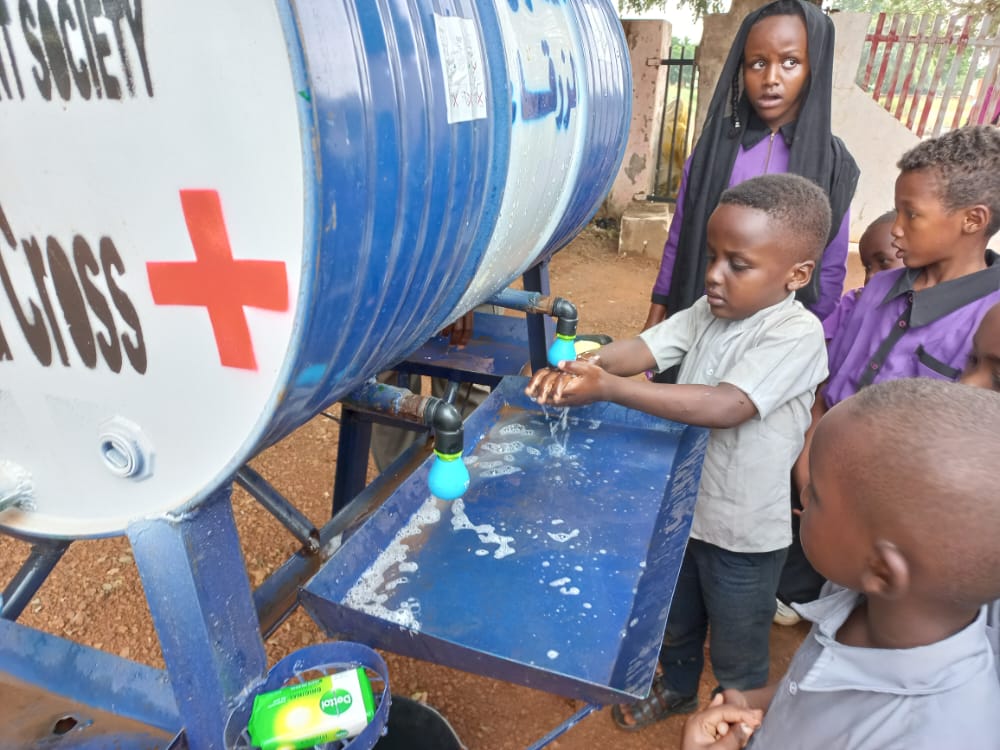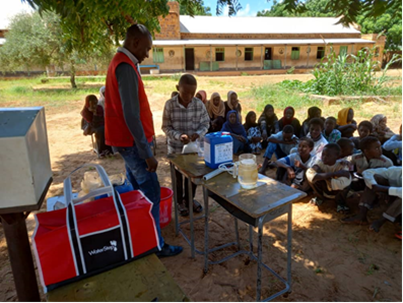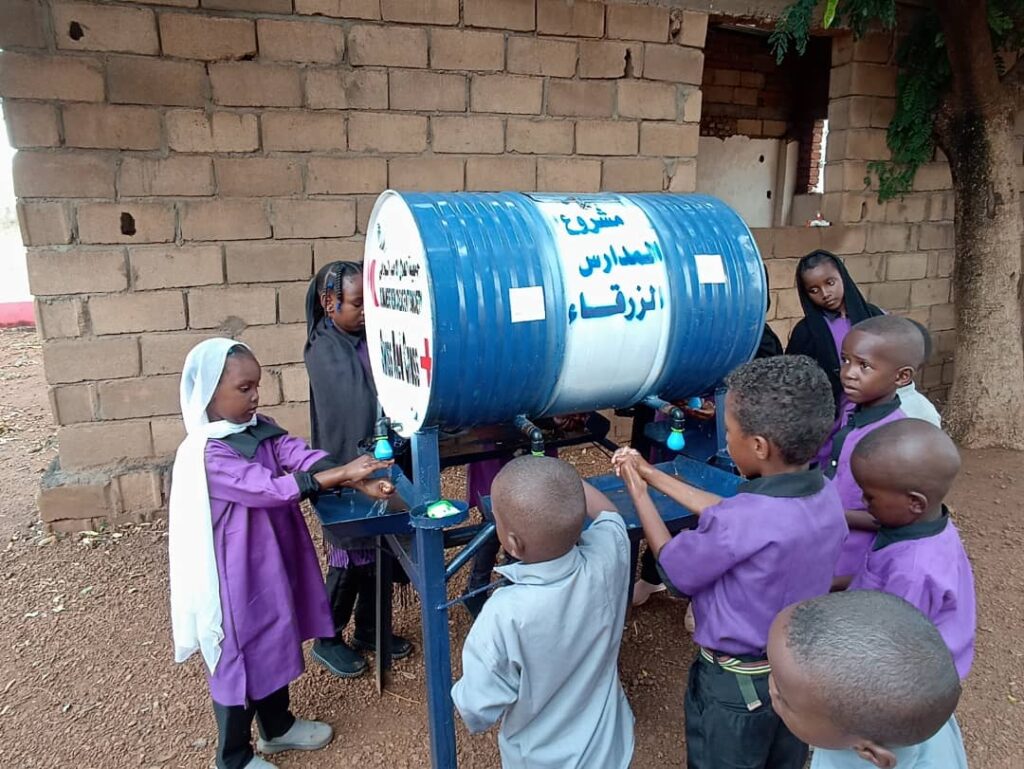11. October 2022
Authors and photo credits: Miada Azrag
Background
In the schools of West and Nord Kordofan in Sudan, many children do not wash their hands due to the lack of water, or only rinse them without a detergent and/or often with dirty water. Yet they use their hands to eat the meals which are provided by the school feeding programme of the world food programme (WFP).
The Swiss Red Cross and the Sudanese Red Crescent Society are implementing a project co-funded by the Swiss Water and Sanitation Consortium in these schools. To tackle this acute danger to the health of children, the Blue School project (BSP) is addressing the issues by providing access to water, teaching proper handwashing techniques, and mounting suitable handwashing stations. Whereas the latter is seemingly a simple task, it was in fact not. Finding the right solution for handwashing infrastructure at the schools has come a long way.
Development of handwashing stations
Children first started to learn handwashing practices with tippy taps which are hands-free devices for handwashing that are especially designed for rural areas where there is no running water. However, its success was unfortunately rather limited in the project area due to several sustainability challenges such as water scarcity, frequently needed replenishment of the used containers, as well as the lack of funds for soap. After trying out different technology adaptations (bigger containers, etc.) did not lead to the wished success either, the BSP team together with the schools came up with a sustainable and innovative handwashing station that is adapted to the restrictive conditions. The schools were provided with user-friendly handwashing facilities consisting of movable and bigger containers that are fitted with “the Drop” taps.

The Drop is an eco-sanitarian tap which was designed in Switzerland. It has two major advantages: Firstly, it is more hygienic than usual taps and valves as the back of the hand is used to start the flow of water and is thus limiting potential contamination. It is estimated that it accumulates 40% fewer microbes than a regular tap. Secondly, it saves up to 70% of water compared to a conventional tap due to the cleverly designed motion of water and its self-cleaning nature. This saves valuable resources in an environment of severe water scarcity. Moreover, the robust design promises to be long-lasting.
Instead of using soap, the water is now chlorinated with locally generated chlorine using a simple technology which results in a chlorine-based handwashing solution. This only requires salt available in the market and a device which can either use a battery, a solar panel or a plug to an electricity grid if available. After being trained by the BSP staff, the students produce the chlorine-based handwashing solution themselves under the supervision of teachers as well as PTA (Parent Teacher Association) members. Moreover, the students are also responsible to fill up the handwashing stations with the produced solution.

The same technology can be used to produce chlorine solutions for multiple other purposes such as for cleaning the classrooms and latrines (for which the schools were lacking appropriate products so far), and even to treat drinking water by simply adjusting the dosage of chlorine.
The used water from the handwashing stations is filtered through a locally made recycling system using charcoal, sand and gravel in different compartments and then reused for irrigation of the gardens and/ or cleaning of latrines.
Handwashing becomes easy
The installation of the handwashing stations has been accompanied by hygiene promotion spearheaded by the trained school clubs. Two schools used the community event approach whereby the students prepared a sketch and demonstrated the proper handwashing practice to the community.
Students are part of the school feeding program but with unclean water many will just eat without washing their hands and we could not afford buying soaps all the time. How we wish we had known these simple technologies and types of taps that you brought, we would not have had such a great number of sick school children. I am sure it was partially due to dirty hands.
reports Mrs. Kawther, one of the teachers in Shushai Girls Primary school
Now handwashing has become fun and easy for the school children and the small mirrors which were attached on the sides of the handwashing facilities played a big role in attracting the girls. The handwashing facilities had been placed in the area near to the eating area which also serves as a hygiene measure for different waterborne diseases like cholera or Covid-19 prevention.
Now we can wash our hands as soon as we come to school. We had known that dirty hands can make us sick and worms could get in our stomachs if we eat food without washing our hands, but this is the first time to have handwashing facilities in our school
says Zianab Hamza (12), while she is washing her hands with chlorinated water before a school meal provided by WFP at Shushai Primary School.
